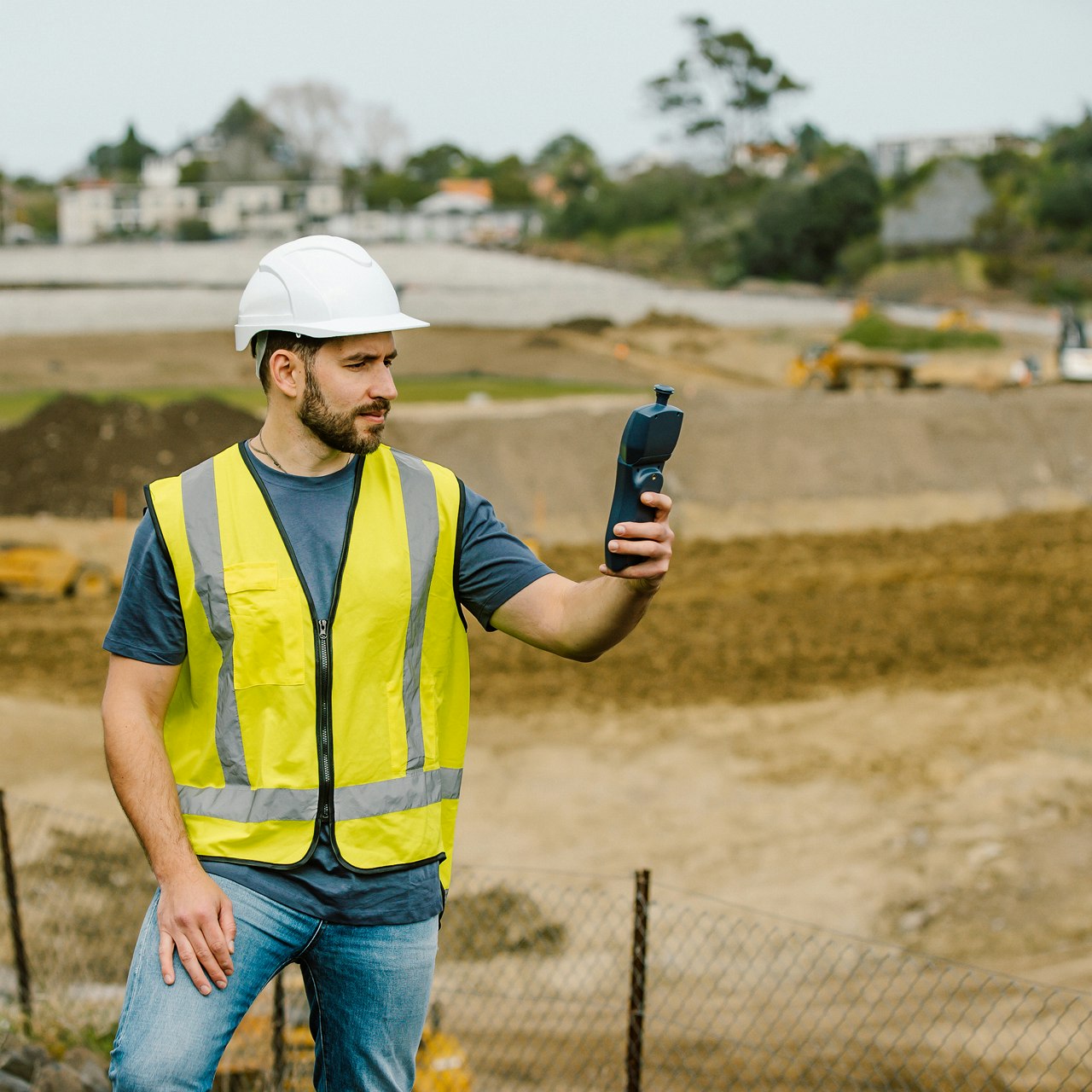Blog
Consultant Opportunity: Grants Available for CARB AB 617
Article Details
Last Updated
30 March 2024
Published
31 July 2019
Category
Outdoor
There is currently an opportunity for consultants to partner with companies to apply for grants available from California Air Resources Board (CARB) for Community Monitoring under AB 617.
What is AB 617?
AB 617 was a new assembly bill signed into law in California that is ‘Community Focused’ to improve air quality. The bill seeks to ensure that all communities in California benefit equally from the state’s air quality and climate efforts, especially those who live in the areas of California most severely impacted by air pollution. These communities are the initial areas identified in AB 617. They will be managed by the local Air Quality Management Districts (AQMDs).
The legislation relies on each local air quality management district working in conjunction with the local communities to achieve the goals of AB 617. There are three distinct goals of the bill:
Adopt an expedited schedule for Best Available Retrofit Control Technology (BARCT)
Deploy community air monitoring systems in the identified communities
Implement plans to reduce emissions in the identified communities
CARB will identify the communities that will be included in the Community Air Protection Program (CAPP) that are subjected to AB 617 community air monitoring systems and community emission reduction plans. Individual air quality districts, the communities and general public will recommend the communities that should be included in the CAPP. AB 617 specifically provides funding for local community groups and AQMDs to participate in the community identification process.
AB 617 has a provision for grants to community-based organizations for technical assistance and to support their efforts in this process.
AB 617 eligible applicants
To be eligible to apply for a grant, an organization must meet at least one of the AB 617 grant tax status requirements:
A California community-based organization holding a current tax-exempt status under Section 501(c)(3) of the Internal Revenue Code.
A California organization, not affiliated with a local, municipal, city, county, or state governmental agency or entity, and holding a tax-exempt status under Section 501(c)(3), of the Internal Revenue Code as the Grantee, in partnership with a California community- based organization without Section 501(c)(3) status designated as a sub-grantee.
A California Native American Tribe. For the purposes of this grant, this includes all Federally Recognized Tribes, and other California Native Americans, as defined by Governor’s Executive Order B-10-11.
A California faith-based organization that qualifies for tax-exempt status under Section 501(c)(3) of the Internal Revenue Code, to the extent consistent with law.
These grants can be applied for in conjunction with one of the above listed partners that meet the not-for-profit tax status required. Consultants can partner with the above type companies to provide a plan to monitor air quality using sensor-based technology.
AB 617 grant focus
The community air grants that are available from CARB are focused on education and technical categories to better inform the public of AB 617 program goals. The purpose of the grants is to provide the communities with logistical and technical assistance in support of their local air quality improvement initiatives. The following are eligible under AB 617 grants:
- Projects that seek to support, enhance, and participate in the utilization of, the Blueprint guidance document. This can include training and educational projects to increase understanding of the Blueprint and its guidance.
- Effective engagement and/or participation in AB 617 Community Steering Committees or AB 617 Technical Advisories, or other mechanisms under AB 617 implementation. CARB highly recommends Community Steering Committees include air grantees from their community, but this is not a requirement.
- Comment on AB 617 community monitoring plans and/or community emission reduction programs.
For Educational projects, CARB encourages activities that could be written into a Community Emissions Reduction Program, or Community Air Monitoring Plan, under AB 617 air district efforts. For Technical projects that will generate data as the main output, CARB recommends including in your proposal the expectations for the data to inform CARB, U.S. EPA, or air district AB 617 efforts, or other follow-up actions. Technical projects may include educational project components.
CARB intends to fund as many eligible community projects as is possible with the Community Air Grants Program. CARB anticipates a diverse mix of projects from many communities, with regional representation from across the state. The selected project portfolio is anticipated to include urban, suburban, and rural settings.
Education grants up to $100,000
AB 617 has education grants of up to $100,000. These grants are specifically to support community participation in governmental decision making on specific AB 617 elements, such as:
- Community engagement and education supporting CARB’s Blueprint document
- Conducting popular education on air quality topics
- Partnership and coalition building for the purposes of AB 617
- Facilitating interaction and cultivating working relationships with government agencies
- Education and support on specific Community Emission Reduction Programs
- Education on other AB 617 statewide strategies
- Education on Best Available Retrofit Control Technologies and implementation
- Education on enforcement concepts
- Education on data reporting and communication
- Any other elements of AB 617 or CARB’s Blueprint document
Technical grants up to $300,000
AB 617 has technical grants of up to $300,000. These grants are specifically to support community science projects focusing on AB 617 aspects, such as:
- Community technology assessments
- Community technical training (monitoring and technical education, including data collection and analysis)
- Community led community air protection efforts
- Community air monitoring support
New for this year’s solicitation
Projects must be wholly located in and benefit disadvantaged and/or low-income communities, as identified pursuant to California Health and Safety Code sections 39711 and 39713 (added and amended by Senate Bill 535 and AB 1550), or on Tribal lands. Project census tract location(s) will be evaluated and confirmed in the applicant background and project description criterion. CARBs priority population investments mapping tool may be utilized for location identification purposes.
Requirements for projects under AB 617
Several requirements must be met in order to apply for a grant and conduct projects under AB 617. These include Letters of Commitment when working with a local AQMD, Technical Work Plans, Air Monitoring Technology Review and a Community Air Monitoring Plan. Refer to CARB’s Blueprint Appendix E. Statewide Air Monitoring Plan for full details.
Letters of Commitment
For projects that propose to work with local air quality management district or U.S. EPA on specific project components, such as co-location of community air sensors at district air monitoring sites, letters of commitment are required from the participating or sponsoring air district. These letters of commitment must describe the nature and extent of their commitment to the project.
Technical Work Plans
In addition to the Scope of Work, applicants that propose a Technical Project will be required to submit a technical work plan outlining the scope of work (see pg. 70, Attachment B in the CARB Air Grant Guidelines). Depending on their project, applicants must complete either option I) for projects with monitoring components, or option II) other technical types of projects, such as study, assessment or analysis. Projects with monitoring components will be required to adhere to the CARB Blueprint’s Appendix E for Community Air Monitoring.
Air Monitoring Technology Review
The air monitoring technology review will cover techniques ranging from deploying dense systems of small air sensors, to using approved criteria air pollutant or air toxics methods, to utilizing advanced remote sensing systems. These will focus on characterizing performance and identifying appropriate applications for each method. CARB staff will conduct laboratory and field-based air sensor evaluations alongside partner programs at the South Coast Air Quality Management District (SCAQMD), which operates the Air Quality Sensor Performance Evaluation Center program (AQ-SPEC), the U.S. EPA, and others who have experience conducting sensor evaluations. Information from these evaluations will be provided to assist communities in selecting methods they can trust to produce the type and quality of data required to meet their needs. Best practices gleaned from existing air monitoring systems will be compiled and documented to inform future air monitoring activities.
Community Air Monitoring Plan: State the community-specific purpose for air monitoring
The Community Air Monitoring Plan must clearly define the community-specific purpose for air monitoring. This may include background information on the community, pollutants of concern, known or expected locations of pollution, and potential sources.
If relevant air monitoring is currently being conducted, the planning team should also identify how the proposed community air monitoring will build from current air monitoring. Alternative approaches to investigating and addressing the air monitoring need(s) should also be evaluated.
Results from ancillary studies that may not directly include air monitoring, such as truck counts, should be discussed in the plan if they have informed the identification of the air pollution concern that will be addressed by air monitoring.
Follow all the guidelines in the community air monitoring guidelines, Appendix E Statewide Air Monitoring Plan, provided by CARB.
A Community Air Monitoring Plan must include the following elements:
1. What is the reason for conducing community air monitoring?
a) Form community partnerships
b) State the community-specific purpose for air monitoring
c) Identify scope of actions
d) Define air monitoring objectives
e) Establish roles and responsibilities
2. How will monitoring be conducted?
a) Define data quality objectives
b) Select monitoring methods and equipment
c) Determine monitoring areas
d) Develop quality control procedures
e) Describe data management
f) Provide work plan for conducting field measurements
3. How will data be used to take action?
a) Specify process for evaluating effectiveness
b) Analyze and interpret data
c) Communicate results to support action
There may be instances where all Plan Elements are not indicative for a Community Air Monitoring Plan. In this case an explanation of why an element is not necessary will be required.
How can Aeroqual’s solutions help you with AB 617 grants?
Aeroqual provides world class, defensible cloud-based air quality sensor solutions for community and dust monitoring. The sensor solutions, such as the AQS 1 can measure a variety of pollutants including PM (PM10, PM2.5, PM1, TSP), NO2, O3, and VOCs, meteorological, temperature and relative humidity. QA/QC programs, including calibration, zero and flow checks are designed to optimize the sensor-based solutions. They can be remotely accessed for all air quality monitoring systems with the cloud-based software provided. Aeroqual has supplied PM, O3, and NO2 sensor systems for AB 617 community monitoring last year, as well as a 100-sensor air monitoring network in Los Angeles, using the AQY Urban Monitor. The AQY Urban Monitor has undergone independent testing at SCAQMD AQ-SPEC, here’s the results. Contact me today to discuss how our solutions can help with an AB 617 Grant.
AQY 1 UPDATE: AQY 1 sales are on hold from 18th March 2021, a critical component in the AQY has gone end of life and for that reason we have put sale and supply of the AQY on hold until further notice. You can read more here.
Aeroqual's AQY 1 air quality monitor
Air monitoring made easy
Take the time and hassle out of your next project with a real-time air quality monitoring solution.












